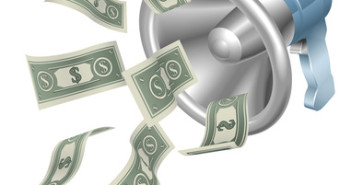We all had a welcome summer bank holiday on Monday which saw the markets closed in the UK. When they did open it proved to be a week where Sterling took its lead from broader themes.One of those themes being the Eurozone CPI data which came out in line with expectation at +0.3%, down from the last month’s reading of +0.4%.
While the CPI result was as expected, it was nonetheless also the worst reading since late 2009. As such it puts pressure on European Central Bank President Mario Draghi to revisit the need for further monetary policy accommodation in an effort to spur economic growth.
The ECB target rate of inflation is around the 2% mark, however it has been quite some time since this was last seen in the single currency state. In fact since last September inflation has been below the 1% mark, making correcting it at the top of Draghi’s ‘to do’ list’.
Guest post by Nick Colling of Cambridge Mercantile FX
The European CPI story coincides with the BOE publically contemplating that how they handle the next rate rise. Be it at the end of this year or beginning of next, there is no doubt that it is something which will be of key importance to the continued recovery of the UK financial system. These two pivotal stories from the UK and the Eurozone of course impact directly upon the rates of exchange corporates in the UK budget for.
With many FDs beginning to turn to budgets for next year the coming few weeks on both GBPEUR and GBPUSD rates are of real importance. It has been well documented that Sterling has performed well for some time now, but we are off the highs for both pairings, leaving the question: where do we go next?
On Thursday the US economy received good news as the Department of Commerce announced the local economy grew at a faster than expected rate of 4.2%. This is the quickest pace that the US economy has grown at since Q3 2013.
The better that forecast results this week are largely attributed to an uptick in exports and business spending. The memory of a shrinking economy in the States earlier this year, when figures had shown a 2.1% contraction due to the poor weather, now seems a distant memory.
Looking ahead to next week we see a host of rate decisions from the Eurozone, UK, Australia and Canada. There are also retail sales figures out from Europe on Wednesday and of course the traditional early month employment figures from the US. Please not that Monday is a public holiday in both the US and Canada next week.
The question now is who will do the Ice Bucket Challenge first: Mark Carney, Janet Yellen or Mario Draghi?
Get ready for September with our podcast:
Download it directly here.



